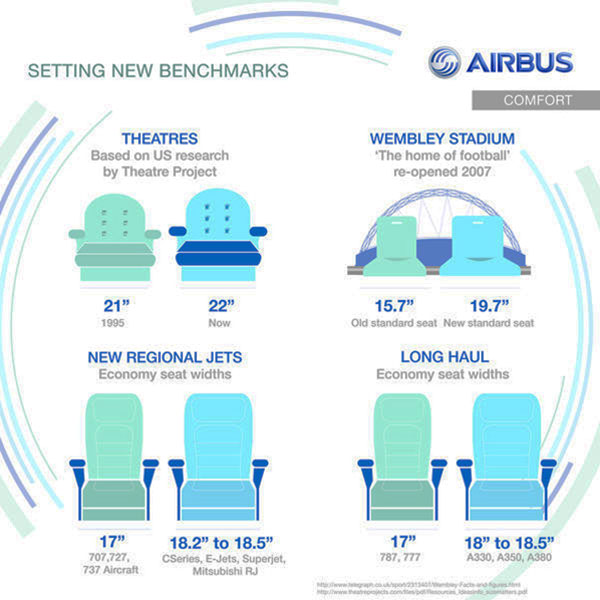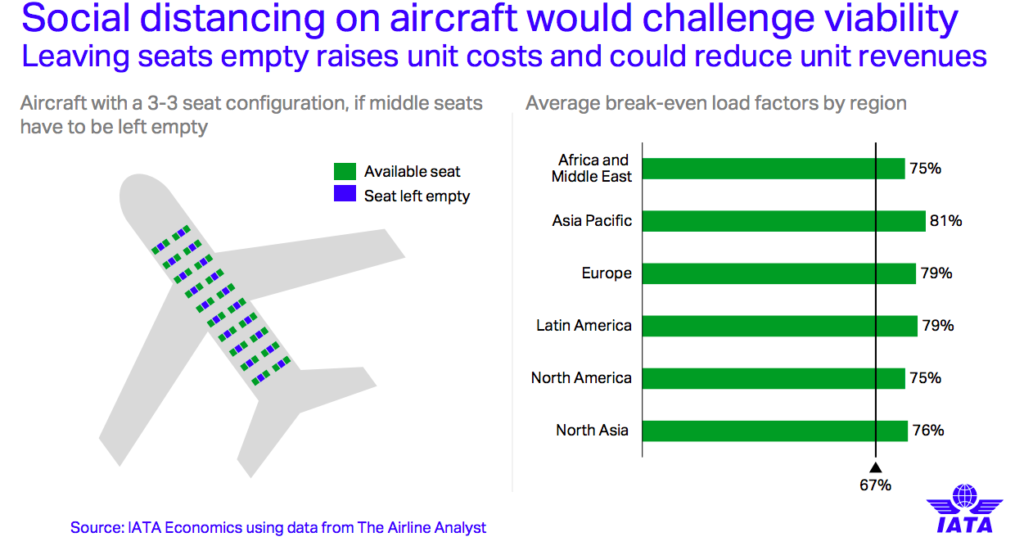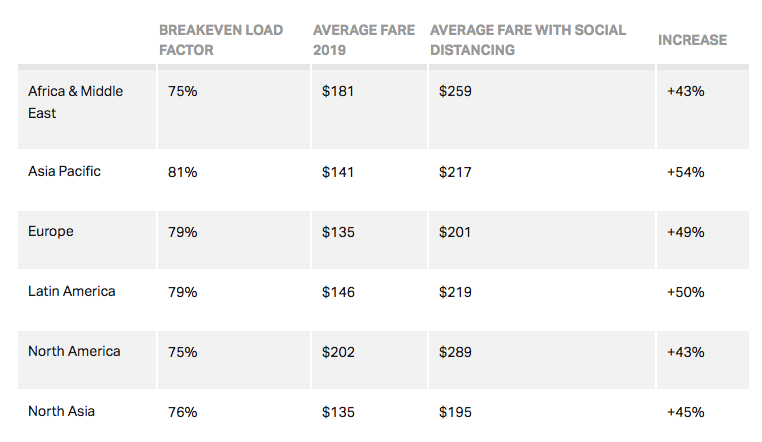Over the past few weeks, we have seen more than one instance of people erupting on the planes because they did not find the middle seat empty next to them. Take, for example, this video clip which went viral, onboard a flight operated by Pakistan International Airlines between Toronto and Lahore, where the passenger is furious that he paid more but did not get an empty middle seat next to him.
To keep middle seat empty or not?
Million dollar question facing airlines & regulators
What we don't need are such scenes as witnessed in PK-789 (Lahore- Toronto)
Passenger upset over no #SocialDistancing measures on-board pic.twitter.com/q9HKgEsQ4u
— Arindam Majumder (@ari_maj) May 7, 2020
And here is another such instance.
https://twitter.com/breakingavnews/status/1259227040307388416?s=20
The fact that people who are not wearing masks are arguing with the crew who don’t take such decisions is deplorable, but we will see more of this in the coming days. Somehow, passengers have got wind, perhaps due to some talk at various airlines in the earlier days of the pandemic, that keeping a middle seat free will help to keep them safe from the Virus, in case that another passenger onboard the plane is infected.
ICAO and WHO have been working on the aspects of safety for international travellers, and the last time the World Health Organisation updated their advice was back in March 2020. It clearly says,
General recommendations for personal hygiene, cough etiquette and keeping a distance of at least one metre from persons showing symptoms remain particularly important for all travellers.
An ordinary economy class seat on a plane is 17” – 18.5” wide, depending on the aircraft you refer to. For instance, here is a very old infographic from Airbus (circa 2013), where they have shown the seat width for various models of aircraft. These haven’t changed much over a while.

So, if correct distancing had to be kept on planes, it would mean for everyone in a seat, at least two seats on both sides and one row ahead or behind roughly will have to be kept clear.
In a conference call with media last week, the International Air Transport Association (IATA) supported the wearing of face coverings for passengers and masks for the crew while onboard aircraft as a part of a layered approach to biosecurity to be implemented temporarily when people return to travelling by air. IATA did not support mandating social distancing measures that would leave ‘middle seats’ empty.
IATA brought on the call their medical advisor, Dr David Powell, who made a comprehensive presentation to demonstrate that there were minimal chances of spreading CoVid19 on board when the appropriate measures were instituted. As per IATA, who tried to do their study to study the spread of the Virus on board, they asked medical contacts of 18 airlines ( which constitute 14% global traffic) about any cases of suspected in-fight transmission and got this:
- Three instances suspected passenger to crew.
- Four instances pilot to pilot (but timing unknown)
- None of the passenger to passenger
Also, on aircraft, seatbacks end up making for barriers between passengers and given the HEPA filters on almost all new-generation aircraft, fresh air is circulated every 2-3 minutes on a plane. Thus, wearing a mask covering the nose and mouth at all stages of flight will reduce the risk of spread. Besides, IATA proposed,
- Temperature screening of passengers, airport workers and travellers
- Boarding and deplaning processes that minimise contact with other passengers or crew
- Limiting movement within the cabin during the flight
- More frequent and deeper cabin cleaning
- Simplified catering procedures that lower crew movement and interaction with passengers.
People have sent me pictures on Twitter asking me if aeroplanes will resemble buses which have started to remove middle-seats to ensure people keep a distance physically. Again, even in the case of the bus, there won’t be any significant impact on keeping the seats separated. However, one must understand that a plane is also a multi-million dollar high-tech equipment and ripping apart seats can have another effect on the technology as well, apart from the time consumed in reconfiguring the hardware. For instance, what happens to the Centre of Gravity of the plane when seats vanish from the aircraft?
There will also be a financial impact of keeping middle-seats empty. When this lockdown/grounding is over, people will take to the sky again. The first bout of travel will be of those people who are stuck in places which they don’t call home. After these crowds subsume, flights are expected to be very limited in operations. For instance, Indian carriers are planning to resume service with less than 25% of their planes when aviation in India opens up again, such as only eight planes on day one for GoAir.
Operating each plane costs a significant amount of money, including fuel costs and so on, and airlines will either have to keep tickets expensive if they let go the middle-seat or they will have to fly the plane to the fullest. Here is a study by the IATA Chief Economist, who laid out the scenario which answers this conundrum. Calls for social distancing measures on aircraft would fundamentally shift the economics of aviation by slashing the maximum load factor to 62%. That is well below the average industry breakeven load factor of 77%.

With fewer seats to sell, unit costs would rise sharply. Compared to 2019, airfares would need to go up dramatically—between 43% and 54% depending on the region—just to cover costs.

Data courtesy IATA
As the Alexandre de Juniac, IATA’s Director General and CEO said,
“Airlines are fighting for their survival. Eliminating the middle seat will raise costs. If that can be offset with higher fares, the era of affordable travel will come to an end. On the other hand, if airlines can’t recoup the costs in higher fares, airlines will go bust. Neither is a good option when the world will need strong connectivity to help kick-start the recovery from COVID-19’s economic devastation.”
Bottomline
Either way, it is a Catch 22 for airlines, and I do imagine that free-seat next to people will become a popular ancillary product for the days ahead, where passengers can buy a free-seat next to themselves if they wanted it. Although I don’t see how it works with, “Oh, I want to sit next to my Spouse” kind of people who will then come and occupy those seats without permission. Ajay Singh, SpiceJet MD also called it hogwash for the same reasons I listed above.
Wearing a mask, and perhaps even a full disposable hazmat suit will become the order of the day ahead when flying. However, for the fact that seats can’t be modified quickly and economically and the fact that the CoronaVirus is still looked at as a temporary inconvenience rather than a permanent feature in this world, for now, do not expect aviation to change their ways entirely. Eventually, if you have to fly, you won’t be getting the middle-seat empty, unless you pay for it. Also, the business of aviation is damaged so much financially, that expecting them to give a free middle seat will be even more catastrophic.
What do you think will be the future of passenger experience onboard an aircraft in the days ahead? Will airlines leave middle seat empty?
Liked our articles and our efforts? Please pay an amount you are comfortable with; an amount you believe is the fair price for the content you have consumed. Please enter an amount in the box below and click on the button to pay; you can use Netbanking, Debit/Credit Cards, UPI, QR codes, or any Wallet to pay. Every contribution helps cover the cost of the content generated for your benefit.
(Important: to receive confirmation and details of your transaction, please enter a valid email address in the pop-up form that will appear after you click the ‘Pay Now’ button. Even though the amount you enter has to be in INR, you may use an international card to process the transaction.)
We are not putting our articles behind any paywall where you are asked to pay before you read an article. We are asking you to pay after you have read the article if you are satisfied with the quality and our efforts.


Empty seat is a must. It has been proven beyond doubt that social distancing and use of masks save lives. Air India is netting a profit of 40 lac per flight after meeting all the costs. Please put value on human life. A passenger pays nesrly1.5 lacs for a India-US one-way flight, which is more than twice one normally pays. He deserves some space.
@Pushap Arora, please show me how does 17″ of distancing help at all? And a passenger has the choice to not get on the plane if the price of INR 1.5 lakh is a problem. What does that have to do with the extra space on a plane?
Sorry. Empty middle seats does nothing but provide a little extra elbow room. Seats are still close together as the article says AND the air recycles to infrequently to make a real difference. As for masks, most non N95 masks screen particle to about .03 microns while viruses are .0125 microns. So most masks are a panacea and only helpful for stopping the largest incoming or outgoing spray.
This disease, while tragic for a small number of people, is also tragic for our economy and our lifestyle. Has I not just retired I would not be slowing my travel. And if desired destinations were open I’d be traveling to the, for a vacation.
Don’t get me wrong…. I’m concerned. But I was also concerned by the flu, norovirus, mad cow disease, and any number of things. But it can’t control our lives